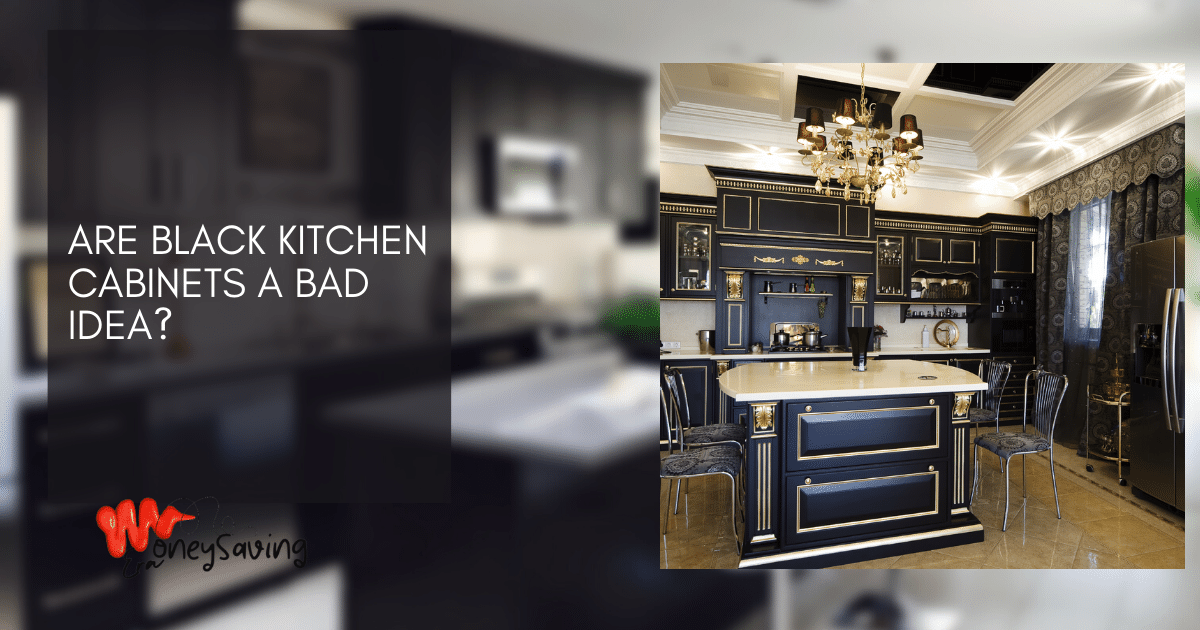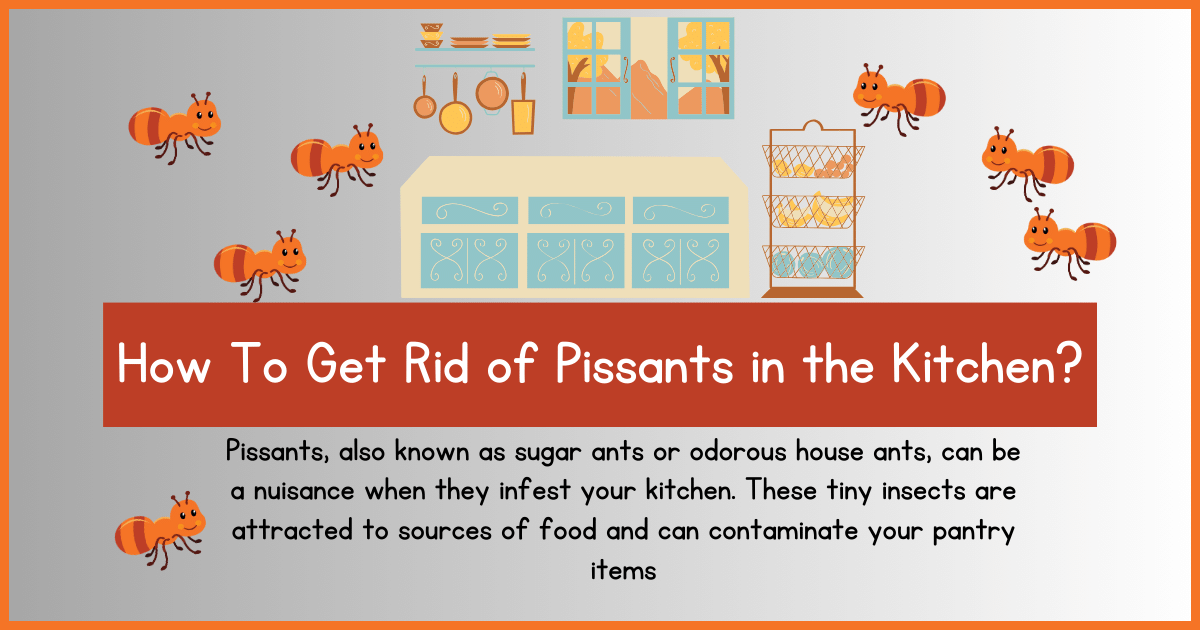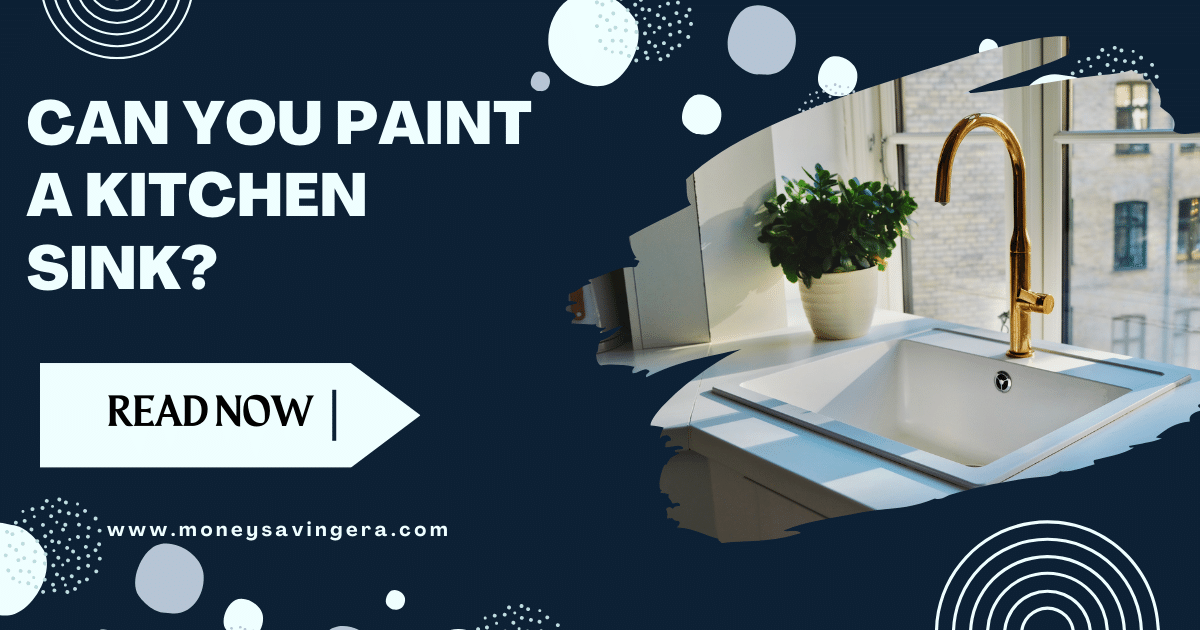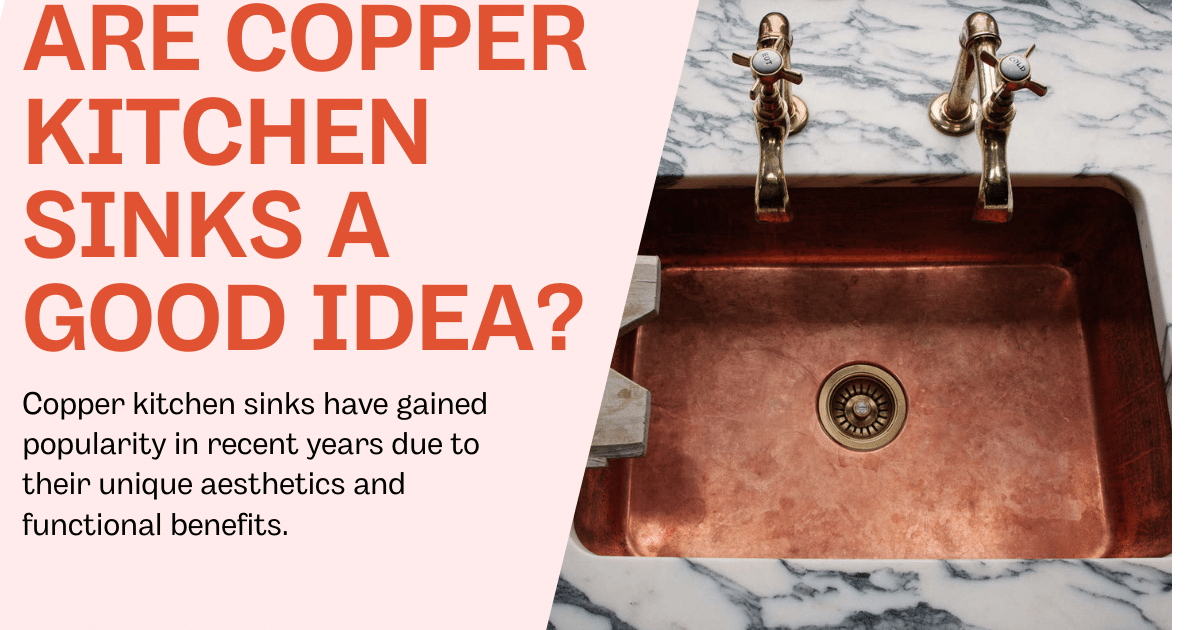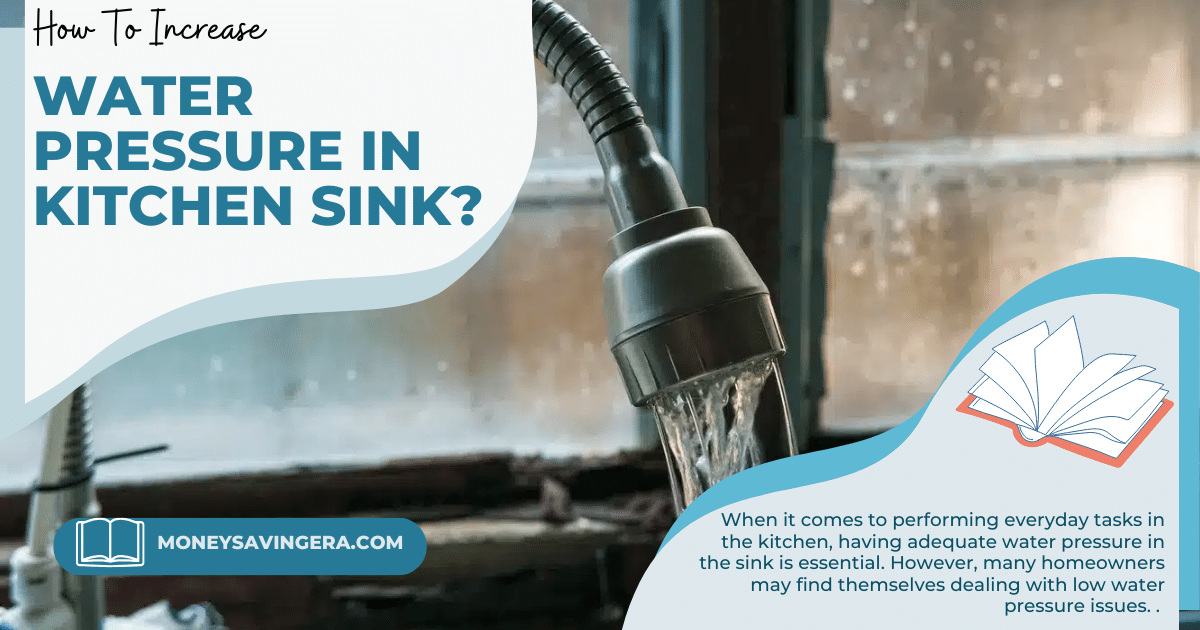Steam damage to kitchen cabinets is a prevalent problem for homeowners, particularly in moist and hot kitchens. Understanding the causes and effects of vapour damage is essential for effectively addressing and resolving the issue.
Assessing the extent of the damage is the first step in determining the necessary repairs. Signs of steam damage on kitchen cabinets can include warping, discoloration, peeling or bubbling of the finish, and mould or mildew growth.
Once the damage is assessed, there are steps you can take to fix steam damage on kitchen cabinets. This includes cleaning the cabinets, repairing or replacing damaged surfaces, refinishing or repainting the cabinets, and applying a protective coating.
To prevent future steam damage, proper ventilation, the use of cabinet heat shields, and regular maintenance are essential. However, in some cases, it may be necessary to seek professional help for extensive steam damage.
Key takeaway:
- Understanding steam damage: Steam can cause damage to kitchen cabinets, leading to warping, discoloration, and degradation of the wood. It is important to be aware of the signs of steam damage.
- Steps to fix steam damage: To address steam damage on kitchen cabinets, gather the necessary tools and materials, clean the cabinets, repair or replace damaged surfaces, refinish or repaint the cabinets, and apply a protective coating.
- Preventing future steam damage: Proper ventilation, the use of cabinet heat shields, and regular maintenance can help prevent steam damage to kitchen cabinets.
Understanding Steam Damage on Kitchen Cabinets
Steam damage on kitchen cabinets can be a frustrating issue to deal with. When left unaddressed, it can lead to warped or discoloured cabinets, affecting the overall appearance of your kitchen. To help you better understand steam damage and how to prevent or mitigate it, here are some important points to consider:
1. Awareness: Importantly, steam damage occurs when the moisture from steam permeates the surface of the cabinet, causing it to expand and possibly warp. This can occur over time, particularly in kitchens with inadequate ventilation or excessive steam use.
2. Prevention: Ventilation is essential for preventing vapour damage. Using exhaust blowers or opening windows to properly ventilate your kitchen can help reduce the amount of lingering steam in the air. It is also essential to avoid positioning cabinets near appliances that generate heat, as the heat can increase steam production.
3. Material Selection: When selecting kitchen cabinets, choose materials that are resistant to heat and moisture. Cabinets constructed from materials such as solid wood or plywood with a superior finish are more resistant to vapour damage.
4. Maintenance: Maintaining your kitchen cabinets on a regular basis can help prevent humidity damage. Immediate removal of surplus moisture or steam from cabinet surfaces after cooking can reduce the likelihood of damage. Moreover, applying a protective sealant or varnish to your cabinets can provide an additional barrier against moisture.
5. Repair: If vapour damage has already occurred, prompt action is required. Depending on the severity of the damage, you may need to consider sanding, refinishing, or replacing afflicted cabinet parts. Consultation with an expert in cabinetry repair can help you determine the optimal course of action for your particular situation.
By understanding the causes and preventative measures, you can minimize the risk of steam damage on your kitchen cabinets and maintain their appearance and functionality over time.
Remember, taking preventive measures and addressing steam damage promptly can help extend the lifespan of your cabinets and maintain a beautiful kitchen space.
Assessing the Extent of Damage
When it comes to assessing the extent of steam damage on kitchen cabinets, it’s crucial to be aware of the telltale signs. We’ll delve into the various signs in this section that can help you tell if steam has impacted your kitchen cabinets.
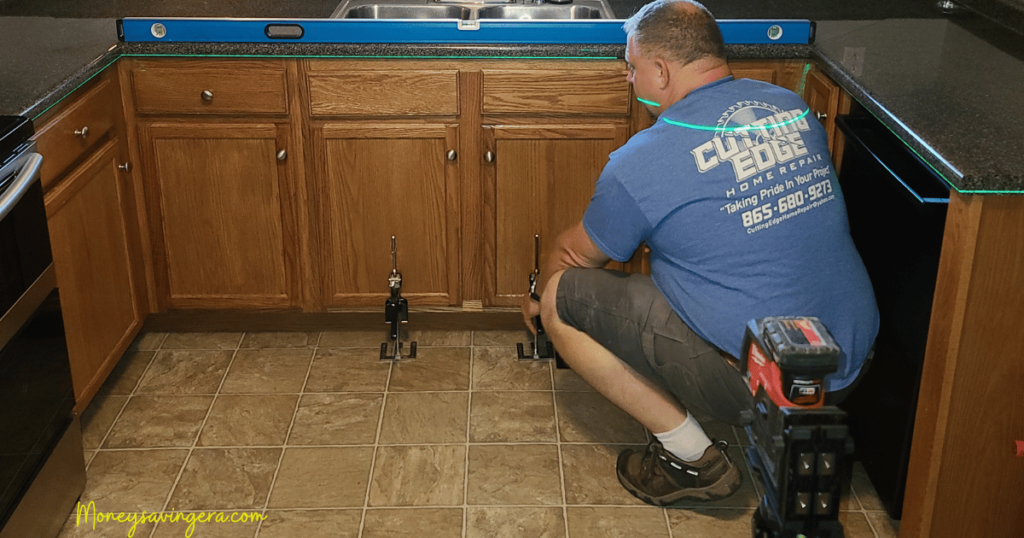
From warped surfaces to peeling finishes, we’ll uncover the visual cues that signify steam damage. So, keep an eye out for these signs to accurately assess the extent of the problem and take the necessary steps to rectify it.
Signs of Steam Damage on Kitchen Cabinets
When it comes to signs of steam damage on kitchen cabinets, there are several indicators to look out for. These indicators may be necessary if steam has impacted your cabinets:
- Warped or Bent Surfaces: One of the most obvious signs of steam damage is when the surfaces of your kitchen cabinets become warped or bent. This can occur when the constant exposure to steam causes the wooden surfaces to expand and contract, leading to structural changes.
- Swollen or Cracked Wood: Another sign of steam damage is swollen or cracked wood. When cabinets are exposed to excessive steam, the moisture can seep into the wood, causing it to swell or crack. This can result in an unsightly and compromised appearance.
- Mould or Mildew Growth: Steam can create a moist environment that is conducive to mould and mildew growth. If you notice any fuzzy patches or musty odours coming from your kitchen cabinets, it could be a sign that mould or mildew has started to develop due to steam damage.
- Peeling or Blistering Paint: The excessive moisture from steam can cause the paint on your cabinets to peel or blister. If you notice any areas where the paint is bubbled or flaking off, it is likely a result of steam damage.
- Changes in Cabinet Finish: Steam can also affect the finish of your cabinets. If you notice any discoloration, cloudiness, or dullness on the surface of your cabinets, it could be a sign that the steam has caused damage to the finish.
Addressing these signs of steam damage on kitchen cabinets promptly is important to prevent further deterioration and maintain the aesthetic appeal of your kitchen. Taking prompt action can help restore the functionality and visual appeal of your cabinets.
Steps to Fix Steam Damage on Kitchen Cabinets
If your kitchen cabinets have fallen victim to steam damage, don’t fret! In this section, we’ll walk you through the step-by-step process of fixing steam damage on your cabinets.
From gathering the necessary tools and materials to applying a protective coating, we’ve got you covered. Say goodbye to those unsightly marks and hello to beautifully restored cabinets.
It’s time to bring back the charm to your kitchen space!
Gather the necessary tools and Materials
When it comes to fixing steam damage on kitchen cabinets, it is essential to gather the necessary tools and materials. Gathering the right tools and materials is the first step in the repair process. Here is a list of items you will need for the task:
- Protective gloves: To protect your hands from any harsh chemicals used during the repair process, it is important to wear protective gloves.
- Mild detergent: Mix a mild detergent with warm water to clean the cabinets and remove any dirt or grease.
- Sandpaper or sanding block: Smooth out any rough surfaces on the cabinets before refinishing or repainting them using sandpaper or a sanding block.
- Wood filler or putty knife: If there are cracks or holes in the cabinets, fill them in and create a smooth surface using wood filler and a putty knife.
- Paint or stain: Refinish the cabinets with paint or stain depending on the desired look. Choose a color or finish that complements your kitchen decor.
- Paintbrushes or foam rollers: Apply the paint or stain onto the cabinets using paintbrushes or foam rollers. Select appropriate sizes for different areas of the cabinets.
- Protective coating: Apply a protective coating to increase the durability of your cabinets. Choose a clear coat suitable for your type of cabinets.
Now that you have gathered all the necessary tools and materials, you are ready to start fixing the steam damage on your kitchen cabinets. Remember to follow the remaining steps in the process, such as cleaning the cabinets, repairing or replacing damaged surfaces, and applying the protective coating.
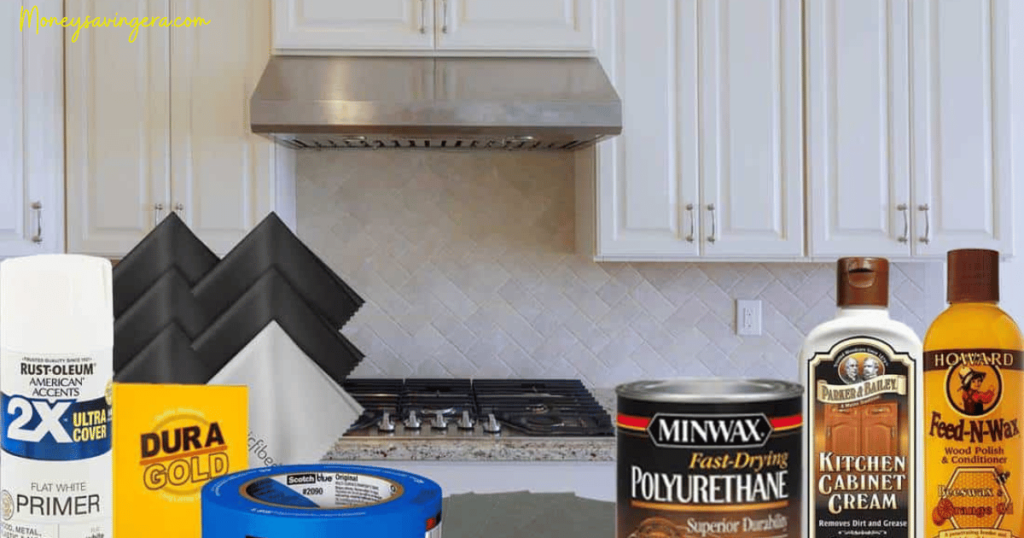
By taking the time to gather the necessary tools and materials, you can ensure the success of your repair job and restore the beauty of your kitchen cabinets. Don’t forget to maintain proper ventilation during the repair process to avoid inhaling any fumes from the cleaning agents or paint. With the right tools and materials, your kitchen cabinets will soon look as good as new!
Clean the Cabinets
To effectively clean the cabinets that have incurred steam damage, you should adhere to the following steps:
- Remove all items, including dishes, utensils, and any other belongings, from the cabinets.
- In a bucket, combine warm water and a small amount of dish soap to create a soapy solution. Mix well.
- Dampen a soft cloth or sponge in the soapy water, ensuring it is not overly saturated.
- Gently wipe down the cabinet surfaces, starting from the top and working your way down. Pay particular attention to areas with visible steam damage, such as near the stove or above the coffee maker.
- If there are stubborn stains or grime, utilize a gentle scrub brush or an old toothbrush dipped in the soapy water to remove the dirt. Be cautious not to excessively scrub, as it may harm the cabinet’s finish.
- Regularly rinse the cloth or sponge in clean water and continue wiping until all soap residue is eliminated from the cabinets.
- To prevent any lingering moisture, use a clean, dry cloth to wipe down the cabinets and eliminate any remaining dampness.
- Ensure the cabinets air dry completely before returning any items.
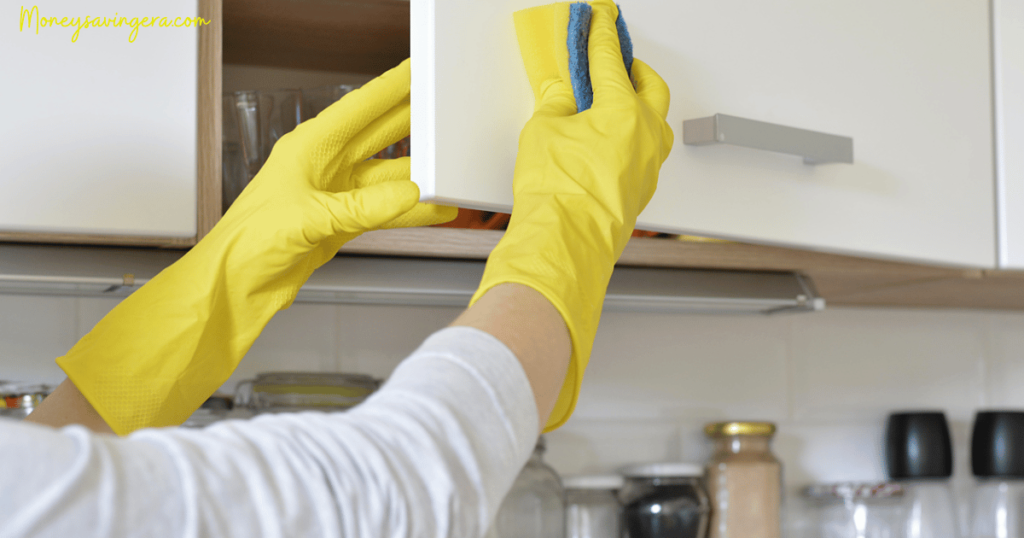
By adhering to these steps, you can effectively clean your cabinets and eliminate any signs of steam damage. Consistent cleaning and maintenance will help preserve the cabinets in optimal condition for years to come.
Repair or Replace Damaged Surfaces
When it comes to repairing or replacing damaged surfaces on kitchen cabinets affected by steam damage, there are several steps to follow:
- Assess the extent of the damage: Before proceeding with any repairs or replacements, thoroughly inspect the cabinets to identify all areas that have been affected.
- Gather necessary tools and materials: Depending on the severity of the damage, you may need items such as wood filler, sandpaper, a putty knife, a screwdriver, replacement cabinet doors or panels, and matching paint or finish.
- Clean the cabinets: Start by wiping down the damaged surfaces with a mixture of mild soap and warm water. This will help remove any dirt, grease, or residue that may interfere with the repair process.
- Repair or replace damaged surfaces: For minor scrapes or scratches, apply wood filler to fill in the damaged area. Smooth it out with a putty knife and let it dry. For more severe damage, such as warped or swollen cabinet doors or panels, it may be necessary to replace them entirely.
- Refinish or repaint the cabinets: Once the repairs or replacements have been made, sand the repaired areas and surrounding surfaces to create a smooth and uniform finish. Then, apply a matching paint or finish to restore the cabinets’ appearance.
- Apply a protective coating: To prevent future damage and prolong the lifespan of your cabinets, apply a protective coating such as polyurethane or varnish. This will help guard against moisture and steam.
Now, let me share a true story that relates to repairing or replacing damaged surfaces on kitchen cabinets.
A couple had recently moved into a new home with a beautiful kitchen featuring wooden cabinets. However, they soon discovered that the cabinets near the stove were showing signs of steam damage. The couple decided to take matters into their own hands and researched how to repair or replace the damaged surfaces. Following the steps mentioned above, they assessed the extent of the damage and gathered the necessary tools and materials.
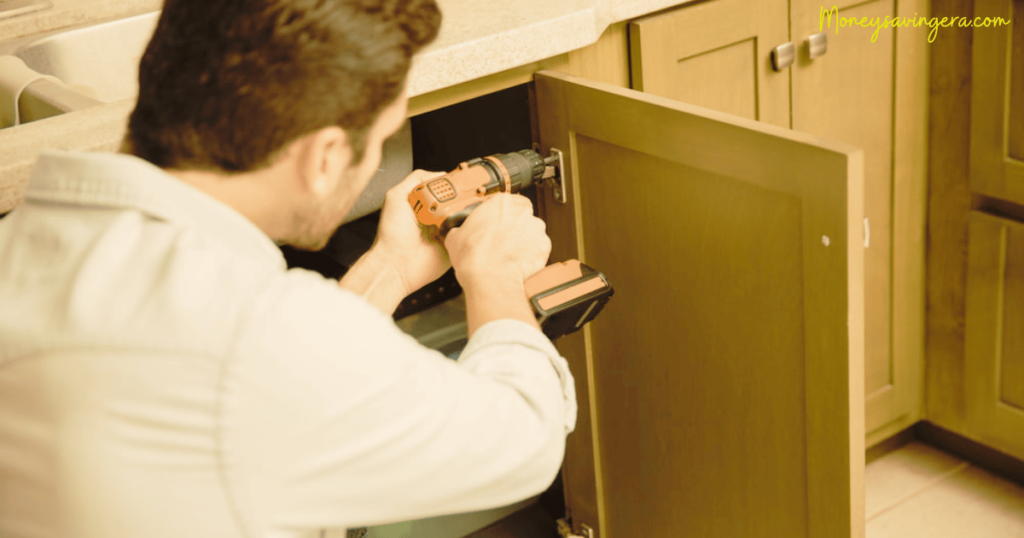
After cleaning the cabinets, they carefully repaired the damaged areas with wood filler and replaced a couple of cabinet doors that were beyond repair. They then refinished the cabinets with a matching paint to seamlessly blend the repaired areas. Finally, they applied a protective coating to ensure the cabinets would be resistant to future steam damage. The couple was thrilled with the results and their kitchen cabinets looked as good as new.
Refinish or Repaint the Cabinets
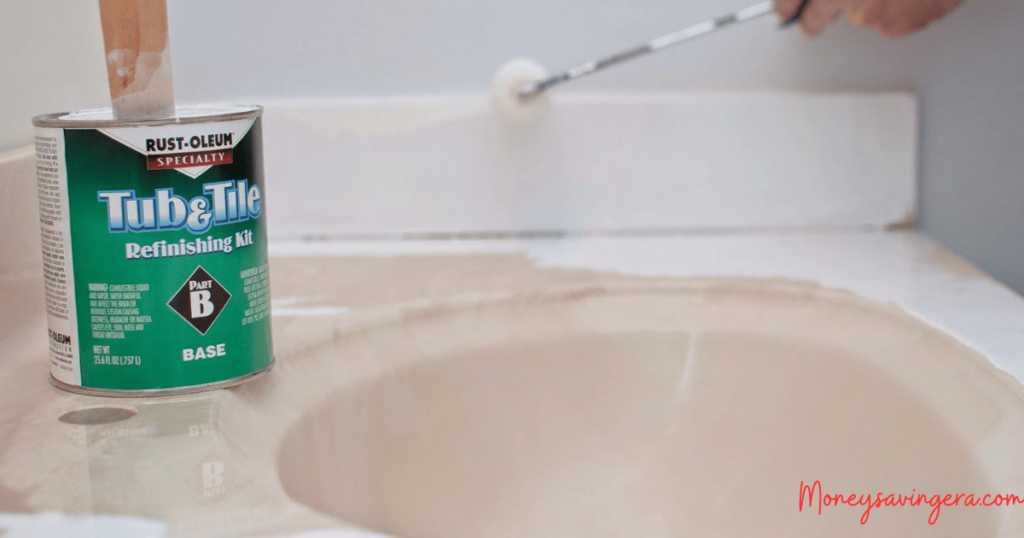
When it comes to fixing steam damage on kitchen cabinets, one important step to consider is refinishing or repainting the cabinets. This will help restore their appearance and protect them from further damage. Here are the steps to refinish or repaint the cabinets:
- Clean the cabinets: Before you can refinish or repaint the cabinets, make sure they are clean and free of any grease or grime. Use a mild detergent and a soft cloth to wipe down the surfaces.
- Remove the old finish: If the cabinets have an old finish that is peeling or damaged, you will need to remove it before refinishing or repainting. Use a paint stripper or sandpaper to carefully remove the old finish.
- Repair any damage: Inspect the cabinets for any dents, scratches, or other damage. Use wood filler or putty to fill in any imperfections and sand the surface smooth.
- Apply primer: To ensure a smooth and long-lasting finish, apply a coat of primer to the cabinets. This will also help the new paint or stain adhere properly.
- Choose your finish: Decide whether you want to refinish or repaint the cabinets. Paint can provide a variety of colors and finishes, while stain enhances the natural beauty of the wood. Select a finish that suits your taste and complements your kitchen decor.
- Apply the paint or stain: Use a brush or roller to apply the paint or stain evenly over the cabinets. Allow each coat to dry completely before applying additional coats, if necessary.
- Protective coating: Once the paint or stain is dry, apply a protective top coat to seal and protect the cabinets. This will help prevent moisture damage and make cleaning easier.
Pro-tip: Before refinishing or repainting the cabinets, make sure to properly ventilate the area and wear appropriate safety gear, such as a mask and gloves. This will help protect you from any fumes or chemicals used during the process.
Apply Protective Coating
Applying a protective coating is crucial for your kitchen cabinets to fix steam damage and ensure their longevity. To apply a protective coating, follow these steps:
- Prepare the cabinets: Before you apply the protective coating, make sure the cabinets are clean and free from dust or debris. Use a mild detergent and warm water to thoroughly clean the surfaces. Rinse with clean water and let the cabinets dry completely.
- Choose the right coating: Select a suitable protective coating for your cabinets. Options like polyurethane, lacquer, or varnish are available. Consider factors such as durability, appearance, and ease of application when making your choice.
- Prepare the coating: Follow the manufacturer’s instructions to prepare the protective coating. This may involve mixing the coating with a catalyst or thinning it with a specific solvent.
- Apply the coating: Use a brush, roller, or sprayer to evenly coat the cabinet surfaces with the protective coating. Start from the top and work your way down, ensuring complete coverage. Avoid excessive brush strokes or drips that can result in an uneven finish.
- Allow drying and curing: Follow the manufacturer’s instructions for drying and curing time. Typically, the coating needs to dry for a certain period before additional coats can be applied. Allow the cabinets to cure completely before using them.
- Apply additional coats (optional): Depending on the desired level of protection, you may choose to apply multiple coats of the protective coating. Lightly sand between coats for better adhesion and smoothness. Let each coat dry and cure before applying the next one.
- Inspect and maintain: Once the protective coating has dried and cured, inspect the cabinets for any imperfections. If necessary, lightly sand and reapply the coating. To maintain the integrity of the protective coating, regularly clean the cabinets with a mild cleanser and avoid using harsh chemicals or abrasive materials.
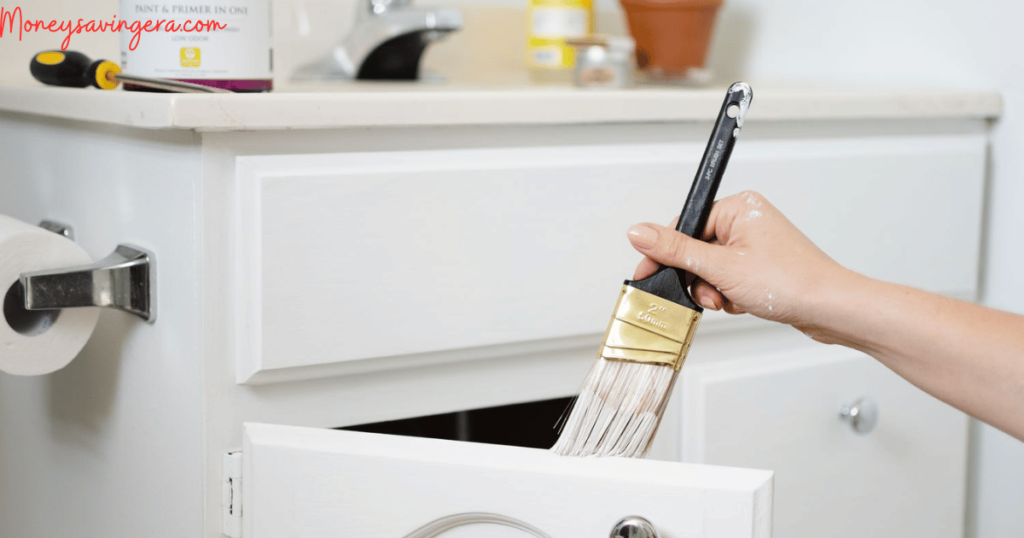
Remember, applying a protective coating can help safeguard your kitchen cabinets from moisture and steam damage. By following these steps, you can enhance the durability and appearance of your cabinets while providing them with long-lasting protection.
Preventing Future Steam Damage
To ensure your kitchen cabinets stay in top condition, it’s crucial to prevent future steam damage. In this section, we’ll explore key strategies for safeguarding your cabinets. From proper ventilation to using cabinet heat shields, we’ve got you covered.
By implementing regular maintenance practices, you can extend the lifespan of your cabinets and keep them looking pristine. Stay tuned to discover the tips and tricks to preserve your kitchen cabinets from the harmful effects of steam.
Proper Ventilation
Proper ventilation is crucial for preventing steam damage on kitchen cabinets. Without adequate airflow, steam can accumulate and cause moisture to build up, leading to damage such as warping or peeling of cabinet surfaces. Here are some important considerations when it comes to proper ventilation:
- Install exhaust fans: One effective way to ensure proper ventilation in the kitchen is by installing exhaust fans. These fans help to remove steam, smoke, and other airborne pollutants, ensuring that the air circulates and remains fresh. It is recommended to have an exhaust fan placed above the stove area to specifically remove steam generated during cooking.
- Open windows and doors: Whenever possible, open windows and doors in the kitchen to allow for natural air circulation. This can help to dissipate steam and prevent it from accumulating on cabinet surfaces. Creating cross ventilation by opening windows or doors on opposite ends of the kitchen can be particularly effective in reducing steam buildup.
- Maintain a proper distance: To promote airflow and prevent steam buildup, avoid placing objects immediately against the cabinet surfaces. Leave some space between the cabinets and surrounding objects, such as walls or appliances, to allow air to circulate freely.
- Avoid blocking vents: Ensure that vents are not obstructed by items like pots, pans, or kitchen equipment. Blocked vents restrict airflow and can contribute to steam damage on cabinets. Keep the area around vents clear to allow for optimal ventilation.
- Regular cleaning: Regularly clean both the interior and exterior of cabinets to remove any dust or dirt. Proper ventilation is essential for maintaining the longevity and condition of kitchen cabinets. Accumulated debris can block airflow, making it difficult for steam to dissipate and increasing the risk of damage.
By implementing these ventilation practices, you can ensure proper ventilation and prevent steam damage, keeping your cabinets in excellent condition for years to come.
Use Cabinet Heat Shields
Protection: Cabinet heat shields, also known as cabinet heat protectors, are an excellent solution to safeguarding your kitchen cabinets from steam damage. By acting as a barrier between the hot steam and the cabinet surfaces, they provide reliable protection.
Heat resistance: Crafted from high-quality heat-resistant materials, cabinet heat shields are specifically designed to withstand and dissipate high temperatures effectively. Their ability to absorb and distribute heat helps prevent any potential harm to your cabinets.
Easy installation: Installing cabinet heat shields is a quick and effortless process. You can easily attach them to the inside of the cabinet doors or place them on the sides of the cabinets. Most shields come with adhesive backing, simplifying the installation further.
Versatility: Cabinet heat shields are available in a range of shapes and sizes, allowing you to find the perfect fit for your cabinets. If necessary, they can be conveniently trimmed to ensure optimal coverage and protection.
Cost-effective: Opting for cabinet heat shields is a cost-effective solution compared to the expenses associated with repairing or replacing damaged cabinets. By preventing steam damage, they effectively extend the lifespan of your cabinets, ultimately saving you money in the long term.
Pro-tip: To maximize the effectiveness of cabinet heat shields, thoroughly clean the cabinet surfaces before application. This ensures a strong adhesive bond and enhances the shields’ performance in protecting your cabinets from steam damage.
Regular Maintenance
Regular maintenance is crucial for keeping your kitchen cabinets in good condition and preventing steam damage. Here are some important steps to include in your regular maintenance routine:
- Clean regularly: Regularly clean the surfaces of your kitchen cabinets to remove any dust, dirt, or grease buildup. Use a mild detergent or cleaning solution and a soft cloth to clean the cabinets.
- Inspect for damage: Regularly inspect your cabinets for any signs of steam damage, such as peeling or bubbling of the cabinet surfaces. Look for any areas that may need repairs or replacement.
- Check for leaks: Check the area around your cabinets to ensure there are no water leaks that could cause steam damage. Pay attention to any water stains or dampness on the walls or floor near the cabinets.
- Keep ventilation in good condition: Proper ventilation is essential to prevent steam buildup in the kitchen. Make sure that the vents or exhaust fans in your kitchen are functioning properly and are not clogged with debris.
- Avoid excessive heat: High temperatures can contribute to steam damage on kitchen cabinets. Avoid placing heat-producing appliances too close to the cabinets and use cabinet heat shields to protect them from direct heat exposure.
- Apply protective coatings: Apply a protective coating to the surfaces of your cabinets to protect them from steam and moisture. This can be a clear lacquer or varnish that forms a barrier against water damage.
- Address issues promptly: If you notice any signs of steam damage or other issues with your cabinets, address them promptly. Ignoring minor problems can lead to more significant damage in the future.
- Seek professional help if needed: If you are unsure about how to properly maintain or fix any damage to your kitchen cabinets, it’s best to seek professional help. They can provide expert advice and assistance in keeping your cabinets in excellent condition.
By incorporating regular maintenance practices into your routine, you can ensure that your kitchen cabinets remain in good shape and minimize the risk of steam damage. Following these steps will help preserve the functionality and appearance of your cabinets for years to come.
When to Seek Professional Help
Knowing when to seek professional help for fixing steam-damaged kitchen cabinets is crucial to ensure the best outcome and prevent further damage. While some minor steam damage can be easily fixed with DIY methods, there are certain situations where it is advisable to involve professionals.
- Extensive damage: If the steam damage to your kitchen cabinets is widespread and severe, it is recommended to seek professional help. They have the expertise and necessary tools to handle complex repairs efficiently and effectively.
- Structural issues: If the steam damage has caused structural problems in your cabinets, such as warping, splitting, or loosening of parts, it is best to consult professionals. They can assess the underlying issues and provide appropriate solutions to restore the structural integrity of the cabinets.
- Mold growth: If you notice mold growth on your kitchen cabinets as a result of steam damage, it is important to involve professionals. Mold can pose health risks and proper remediation is crucial to eliminate the problem completely and prevent recurrence.
- Electrical complications: If the steam damage has affected electrical components within the kitchen cabinets, it is essential to seek professional help to address the electrical hazards and ensure safety.
- Complex restoration: If you have antique or custom-made cabinets that require intricate restoration work, it is advisable to hire professionals with expertise in cabinet restoration. They have the skills and experience to handle delicate and valuable pieces.
Story:
A few years ago, I experienced severe steam damage to my kitchen cabinets after a faulty dishwasher caused a steam leak. At first, I attempted to fix the damage myself using various DIY methods, but soon realized that the extent of the damage was beyond my capabilities. The cabinet doors were warped, and mold had started to grow in hidden corners.
Recognizing the need for professional help, I contacted a reputable cabinet restoration company. They promptly assessed the damage and provided a detailed plan for restoring my cabinets. With their expertise, they were able to repair the warped doors, eliminate the mold growth, and restore the cabinets to their original condition.
Seeking professional help not only saved me time and effort but also ensured that the repairs were done correctly and professionally. I learned the importance of knowing when to involve experts for complex issues like steam-damaged kitchen cabinets, as they have the necessary skills and knowledge to handle such situations effectively.
Some Facts About How To Remove Steam Damage on Kitchen Cabinets:
- ✅ Steam damage can cause discoloration, warping, and peeling of kitchen cabinets.
- ✅ It is important to act quickly to address steam damage as it becomes harder to repair the longer you wait.
- ✅ Assess the extent of the damage before starting repairs and thoroughly clean the affected area.
- ✅ Use sandpaper to smooth the surface and remove any rough patches caused by the steam.
- ✅ Apply wood filler evenly to fill in gaps or cracks in the wood and let it dry before applying matching stain or paint.

